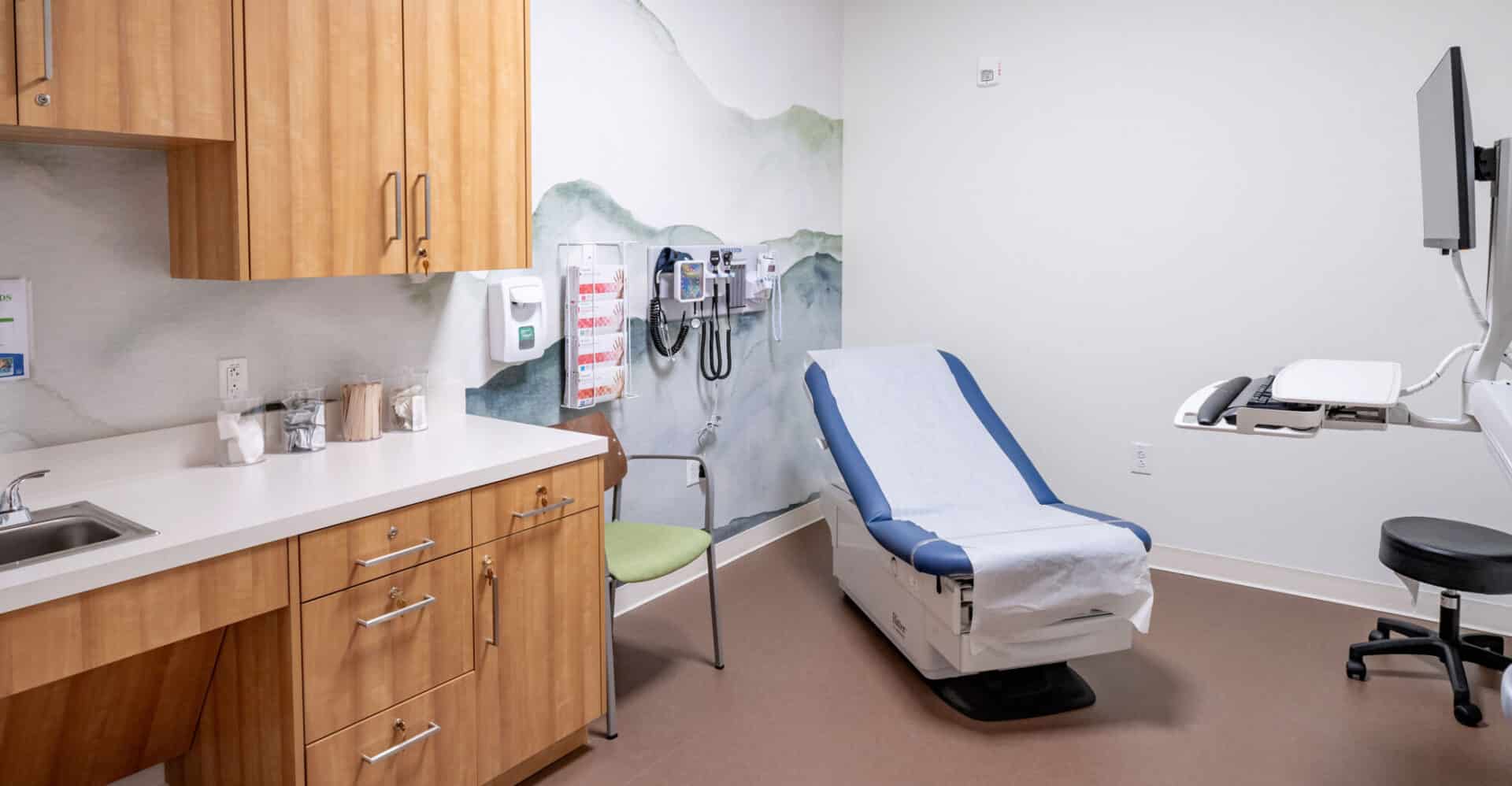By: John Hyde, Senior Sustainability Manager, and Bradley Baker, Associate Principal Sustainability Leader at SMRT Architects & Engineers, for the September/October 2024 issue of Medical Construction & Design.
Climate change is an urgent problem, and the healthcare industry is a significant contributor to greenhouse gas emissions and waste streams. According to the Health and Human Services Department, healthcare accounts for nearly 8.5% of U.S. greenhouse gas emissions. If ignored, emissions from this sector will continue to rise and accelerate the climate crisis.
Decarbonizing the healthcare industry will be challenging but will have many advantages, including reduced operational costs, lower carbon footprint, reduced environmental impact, and fewer adverse health effects on surrounding communities and supply chains.
Fortunately, there are practical and scalable decarbonization strategies that can be implemented now, which will have an immediate and lasting positive impact on the environment and humankind.
Shifting the Focus: Prioritizing Decarbonization over Certification
While certifications can be valuable long-term goals, prioritizing immediate action is crucial for healthcare sustainability. We can achieve this by focusing renovations on energy reduction and decarbonization strategies. Upgrading building envelopes and HVAC systems can make a significant impact now, reducing the environmental footprint while laying the groundwork for future certifications. According to a 2018 report by the U.S. Energy Information Administration, hospitals account for roughly 9% of the total national commercial building energy consumption in the United States. This translates to significant environmental and financial burdens equating to $10.9 billion annually.
Decarbonization Through Smart Renovations
Renovations can significantly reduce a healthcare facility’s operational carbon footprint. Fortunately, evaluation tools and scalable technologies are available to identify and implement the right decarbonization strategies effectively. A well-designed enclosure with proper air sealing, insulation, and an efficient HVAC system will enhance building performance and occupant comfort, providing improved air quality for patients and staff.
Evaluating the building envelope and optimizing it through air sealing and insulation upgrades are important first steps. Utilizing passive design strategies like natural daylighting and ventilation reduces energy demand for lighting and HVAC systems. Sealing air ducts, insulating piping and ductwork, retro-commissioning existing HVAC systems, or installing new energy-efficient HVAC systems can all help as well. After minimizing building energy consumption, incorporating onsite renewable energy can substantially reduce utility costs and move facilities in the direction of zero carbon futures.
Selecting Sustainable Materials
Choosing sustainable materials and equipment for healthcare renovations is no simple task. Comparing the health versus sustainability of building materials is complicated by inconsistent data availability. Trade-offs exist, as a material with low environmental impact might have higher health concerns. Weighing cost considerations alongside subjective health impacts, life cycle analyses, and downstream implications like human rights violations in material sourcing requires a nuanced approach.
Keeping up with emerging products and evolving regulations requires significant time and resources. When researching materials, consider local sourcing, recycled content, and their impact on the craftspeople installing them. Explore biobased and other innovative materials, such as wood fiber insulation, refrigerants with lower global warming potential and low embodied carbon concrete.
Navigating through the material selection process requires patience and a thoughtful approach. Fortunately, there are several tools available that can help.
- Environmental Product Declarations (EPDs) quantify a product’s embodied carbon impact, allowing for comparisons and selecting options with lower upfront environmental impacts.
- DECLARE labels focus on material transparency, identifying products free of harmful chemicals listed on the “Red List” and promoting informed decisions about indoor air quality.
- Health Product Declarations provide a detailed breakdown of a product’s ingredients and potential health effects, ensuring occupant well-being aligns with environmental responsibility.
- Cradle to Cradle certification takes a holistic approach, evaluating materials throughout their lifecycle, from sourcing to disposal, to promote responsible manufacturing and minimize environmental impact.
Balancing Sustainability with Cost and Performance
Despite the multitude of evaluation tools and systems to assess product sustainability, navigating them can be complex and challenging. Even the most environmentally friendly option may not be ideal if it significantly increases project costs, lacks long-term durability or poses adverse health or environmental risks.
Achieving the right balance is key and often involves compromises. The best approach considers cost, performance, durability and sustainability and prioritizes those most critical for a specific project.
It’s important to think beyond first costs and embodied carbon impacts and consider whole life carbon. How often will the product need to be replaced and sent to a landfill? How will replacement impact ongoing building operations? What will be the total cost and annual operational emissions impact over the next 60 years?
The Path Forward
The healthcare sector has a significant role to play in combating climate change and protecting the health of communities. Every renovation project is an opportunity to make significant strides toward decarbonization.
While certifications can be valuable long-term goals, immediate action is paramount. Studies by the National Resource Defense Council show that hospitals implementing energy-saving measures can achieve average annual energy cost savings of 10-30% — savings that can be reinvested in patient care and further sustainability initiatives.
To achieve this, collaboration is crucial. Project teams can leverage their expertise and tools like EPDs and HPDs to select sustainable and healthy materials and develop cost-effective and energy-efficient solutions.
The impact of healthcare buildings on the environment is colossal. By embracing these strategies, prioritizing immediate action and improving existing buildings, the industry can pave the way for a future where green healthcare design isn’t just a trend, but the standard for a healthier planet and healthier patients.
About the authors
John D. Hyde, PHIUS Certified Builder, LFA, LEED AP is Senior Sustainability Manager at Chapman Construction/Design, headquartered in Newton, Mass.
Bradley R. Baker, AIA, CPHD is Associate Principal | Sustainability Leader | Senior Architect at SMRT Architects & Engineers, licensed in ME, NH & MA.


